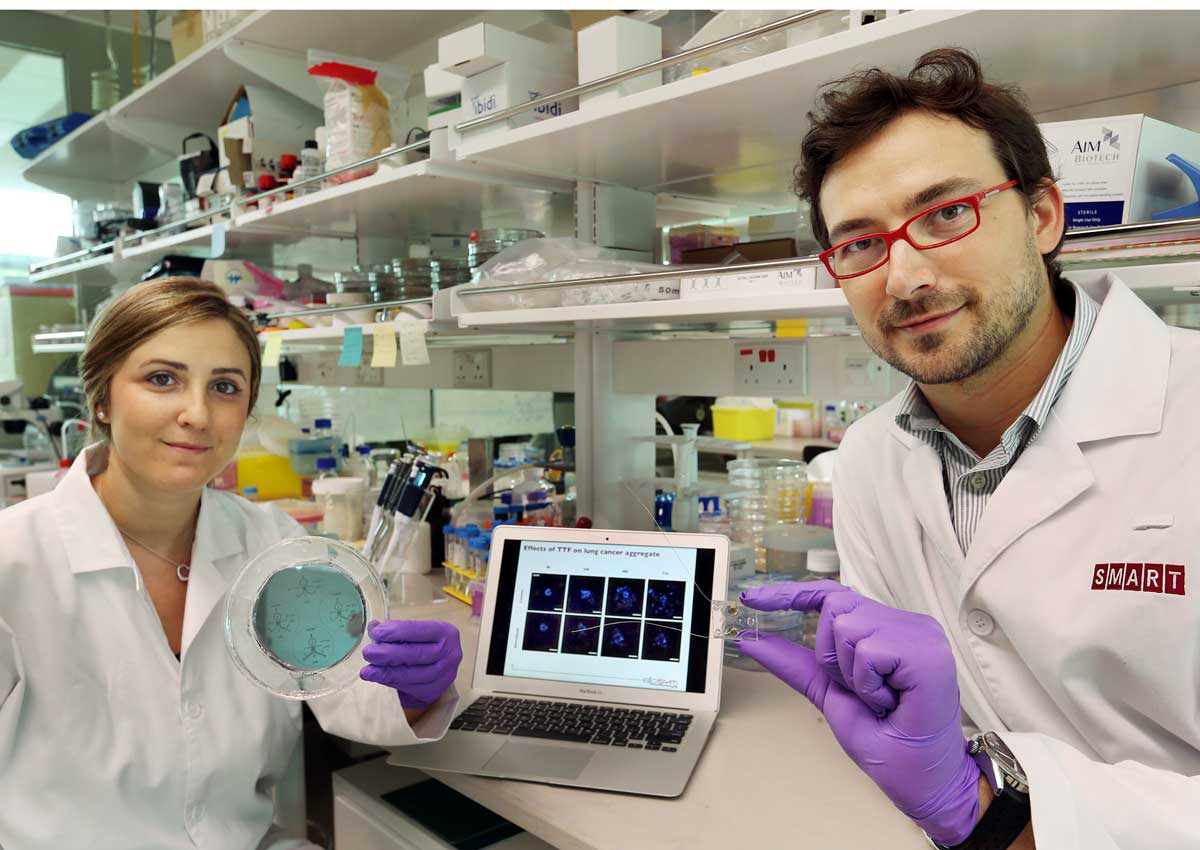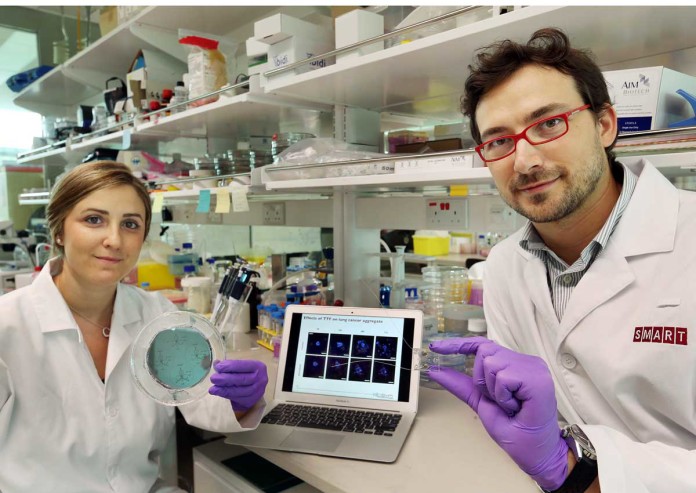The idea of treating cancer with an electric field has been around for years, but it has been slow to take off because of a lack of understanding of the science behind it.
Now, a team of bioengineers from Singapore, Australia and the United States has verified that it works – and invented a gadget that will facilitate clinical testing and a better understanding of the therapy.
Tumour Treating Fields (TTFields), which do not require surgery, are alternating electric fields that disrupt the alignment of molecules necessary in cell division.
It is far different from a controversial kind of electrical therapy that zaps the brain or body with electric currents to treat illnesses ranging from depression to diabetes.
With TTFields, no electric current flows through the body.
About 10 years ago, an international team of researchers showed the therapy slowed the growth of a highly aggressive type of brain tumour called glioblastoma multiforme (GBM).
The only side effect was some inflammation where the electrodes touched the skin.
In 2011, the US Food and Drug Administration approved Optune, a wearable device by US-based firm Novocure that administers TTFields on GBM patients.
Read Also: Hundreds attend funeral of British girl who was ‘true face’ of childhood cancer
Available only in the US, Europe, Israel and Japan, it requires consultation with a specially trained doctor and costs US$21,000 (S$29,800) a month excluding consultation and hospital fees.
Singapore’s Health Sciences Authority said it had not received any application for the use of TTFields therapy here.
Novocure is already conducting trials for other cancers, including lung, ovarian and pancreatic.
Dr Kevin Chua, a radiation oncologist at the National Cancer Centre Singapore, said: “We know the therapy works, in broad strokes… but we don’t actually know a lot beyond that…We don’t yet have a deep understanding of how it affects various stages of cancer development.”
Efforts to better understand TTFields could be boosted by a new gadget from a team led by Dr Andrea Pavesi at the Singapore-MIT Alliance for Research and Technology, with funding from Singapore’s National Research Foundation.
Their work was published in Nature Scientific Reports in May.
Read Also: Mum and toddler in big fight for their lives
No bigger than a postage stamp, the device contains electrodes and tiny channels embedded in a transparent polymer.
It enables TTFields to be applied on cancer cells in a three-dimensional environment; conventional flat cell cultures are done on agar plates.
It uses fewer reagents and facilities because of its small size, so costs can be cut down.
Eventually, a patient’s own cancer cells could be specifically tested.
Every patient’s cancer is slightly different, and customised treatment could become possible.
Using the device, scientists verified earlier findings that TTFields can suppress multiplication of human breast and lung cancer cells.
Read Also: Cancer survivor turns Cinderella
Moreover, the effect on non-cancer cells seems negligible.
This could be because TTFields target cell division, and normal cells do not divide as rapidly as cancer cells, said Dr Pavesi, who came up with the idea for a device to test TTFields after watching a talk by Novocure founder Bill Doyle.
Progress in TTFields research has been slow. Russian scientist Georges Lakhovsky discovered in the 1920s that oscillating electric fields had effects on living cells, but no one took him seriously.
Dr Pavesi said: “For years, people thought he was crazy.”
But now, advances in technology have helped revise that view.
“You need to have engineering knowledge to apply to the biology, as you need to understand what this electric field is… it’s something you can’t see, it’s something that’s hard to measure,” said Dr Pavesi.
He hopes his gadget will give the research a boost.
“It will be nice to use the device to explore different electric fields, different types of cells, different combinations of therapies,” he said.
Dr Wong Seng Weng, who is medical director of Singapore Medical Group’s The Cancer Centre, said: “Much work needs to be done to understand the best utilisation of TTFields and how to optimise it… combination treatment could emerge as the best way forward.”
Dr Pavesi concurs. “It’s not enough using only one technology to fight cancer.
You need to combine as many therapies as possible.”

This article was first published on December 05, 2016.
Get a copy of The Straits Times or go to straitstimes.com for more stories.







